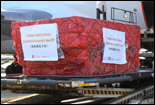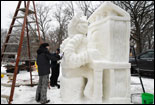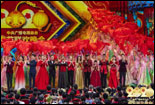Kako je Kina sudjelovanja u osnivanju Ujedinjenih naroda?

Foto: Arhiva
Following the fundamental shift in the global war against fascism, the Allies began to give more and more thought to major issues such as consolidating the victory of the war and safeguarding postwar world peace and security. As a result, the establishment of a new international organization – the United Nations – gradually became part of the Allies' agenda.
On October 30, 1943, China, the United States, Great Britain, and the Soviet Union jointly signed the Declaration of the Four Nations on General Security. This was a key step toward the creation of the United Nations. According to the declaration, the four countries would establish a general international organization for the maintenance of international peace and security, and that before this organization was established, they would consult with one another with a view to joint action on behalf of the community of nations. As one of the four signatories of the declaration, China was intended to have an important place in this new organization.
To put into practice the Declaration of the Four Nations on General Security, between August and October 1944, delegates from China, the United States, Great Britain, and the Soviet Union met at Dumbarton Oaks in Washington, DC to jointly draft the organizational plan for the United Nations. From April to June 1945, these four nations jointly held the San Francisco Conference, where delegates from 50 countries in attendance discussed the formulation of the Charter of the United Nations. The Chinese delegation was headed by T. V. Soong and consisted of members of the KMT, the CPC, and other democratic parties as well as persons without party affiliation. Dong Biwu, a representative of the CPC, attended the conference as a member of the Chinese government delegation. During the conference, the Chinese delegation advocated for justice and equity, making important contributions to the success of the conference. For example, the Chinese delegation proposed that a new trusteeship system be established so that trust territories could develop toward independence and autonomy. This proposal was included in the Charter of the United Nations, and is a major contribution made by China to the global national liberation movement.
The Charter of the United Nations was finally adopted at the conference, and a ceremony was held for its signing. Dong Biwu and other Chinese delegates signed the charter. After ratification of the charter by China, the Soviet Union, Great Britain, the United States, and the majority of other signatory states, it came into effect on October 24, 1945. According to the charter, China was not only a founding member of the United Nations, but also one of the five permanent members of its Security Council.
· Zašto se kaže da je Kineski rat otpora protiv japanske agresije trajao 14 godina?
· Zašto je rat otpora nacionalna prekretnica od pada na novi ciklus?
· Zašto je KPK bila uporište kineskog ujedinjenog otpora?
· Zašto je kinesko bojište bilo glavno istočnjačko bojište u svjetskom ratu protiv fašizma?
· Koji je incident obilježio početak rata protiv otpora?
· Kako je osnovana marionetska država Mandžukuo?
· Što je obilježilo početak kineskog nacionalnog otpora?
· Kako je KPK upravljala ratom otpora?
· Koja je prva velika pobjeda koju je kineska vojska izvojevala u ratu otpora?
· Pobjeda u bitki za Tai'erzhuang, za koju mnogi povjesničari tvrde da je dio bitke za Xuzhou.
· Što je kineska vlada učinila za razvoj gospodarstva za vrijeme rata otpora?
· Što se događalo s kineskom diplomacijom nakon početka narodnog rata otpora?
· Kako su Kinezi u domovini sudjelovali i podržavali rat otpora?
· Kako su Kinezi izvan domovine pomagali u kineskom ratu otpora?
· Kako je ostatak svijeta podržao kineski rat otpora?
· Koje su nove taktike razvijene u kineskom gerilskom ratovanju protiv japanske agresije?
· Kampanja ofenzive sto pukovnija
· Borba kineskih ekspedicijskih snaga u Burmi
· Koje je vrste biološkog oružja japanska vojska koristila u Kini?
· Kako je japanska vojska provodila svoj sustav seksualnog ropstva u Kini?
· KPK je pokrenula prvu stratešku protuofenzivu na kineskom bojištu
· Proslava japanske predaje i prihvaćanja u Kini
· Narodni tajvanski otpor protiv Japanaca i oporavak Tajvana
· Kako se sudilo japanskim ratnim zločinima?




















